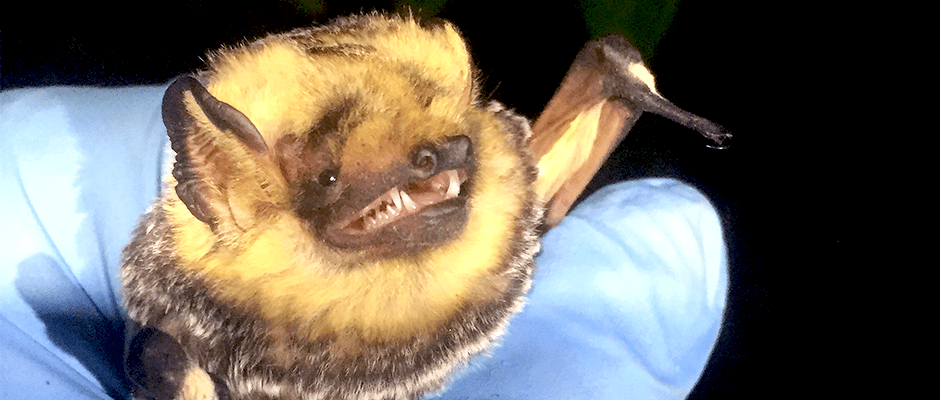Share this article
Bats, biscuits, and BBQ: My story of a summer in the South
Living in Maine my whole life, I have spent very little time south of Southern Maine. This is why when given the opportunity to cross over the Piscataqua, and drive another thousand miles south, I was beyond ecstatic. I have traveled to Georgia a few times, but not for a long stay, and never for the purpose of research. So, in May, I packed up my Subaru and started the long drive to Athens.
I spent this summer working on a study looking at bat occupancy, as well as roost selection for the recently listed northern long eared bat (Myotis septentrionalis) and tricolored bat (Perimyotis subflavus). As most wildlife biologists know, east coast bats are facing massive declines in population due to the fungal pathogen White Nose Syndrome (Pseudogymnoascus destructans), so learning about their habitats, roost preferences, and distribution in terms of conservation is of the utmost importance. There is not a clear answer to the issue of White Nose, so in the meantime we must learn how to best preserve the habitats of these amazing winged, insectivorous creatures.
This project took place in a very diverse set of geographic areas. Some very urban, and when I say urban, I mean very urban, like suburban Atlanta. (As a side note, if you find yourself in the area go to Martin’s and get a chicken biscuit, you won’t regret it.) We had to drive through rush hour traffic in large field trucks on numerous occasions. On these urban projects we worked in the Chattahoochee River National Recreation Area, Kennesaw Mountain National Battlefield, and Ocmulgee National Monument. These experiences were so foreign to me because of how urban they were. Interacting with people as much, or more than the bats we were studying was such a new experience, but gave wonderful opportunity for public education. The other part of this study took place in the Chattahoochee National Forest which is in the very rural northern part of the state. Our study areas here were such a drastic change. We saw few people at netting sites, and most only when we went into town for groceries, or to steal coffee shop wifi. This aspect of the project gave me the opportunity to see the unbelievably beautiful southern part of the Appalachian Mountain range.
For the readers who aren’t bat biologists, field work with chiropterans requires one to be very versatile. We would leave our field camps at around 7 p.m. to set up netting sites. The set-up is structured as two mist nets of various lengths stacked on top of each other with a not so elaborate pulley system to move them up and down. We check nets every 10 minutes or so and remove any captured individuals, then take measurements of weight, forearm length, wing condition, and other pertinent characteristics. If we were lucky enough to capture a target species, we would affix a radio transmitter to its back and release it into the night. This is where the versatility is key. Being on a night schedule, we would usually get home between three and four in the morning. However, when we had a bat on transmitter, we would need to awake early in the morning and venture out into the Georgia heat to track it to its roost. We would conduct vegetation surveys to characterize the roosting habitat of these sites. Sometimes this process was simple and the bat would be less than 100 meters from a road, other times it would be a few miles off, or not detectable at all. These were the more difficult days.
My love of bats began only two, or so, years ago. I applied to this job on a whim, after seeing it posted online. It seemed like a longshot. I had no bat experience, was 1,300 miles away, and had no idea what a hushpuppy was. When I was offered the position, I almost immediately started packing. This is an experience that I will never forget, and my passion for bats has only grown as a result of it. I hope that someday I will get the chance to work with bats as part of my career, be that in the south or not. At least if it is in the south I will get the chance to eat all biscuits, and barbecue that I want.
Header Image: ©Kyle Shute








